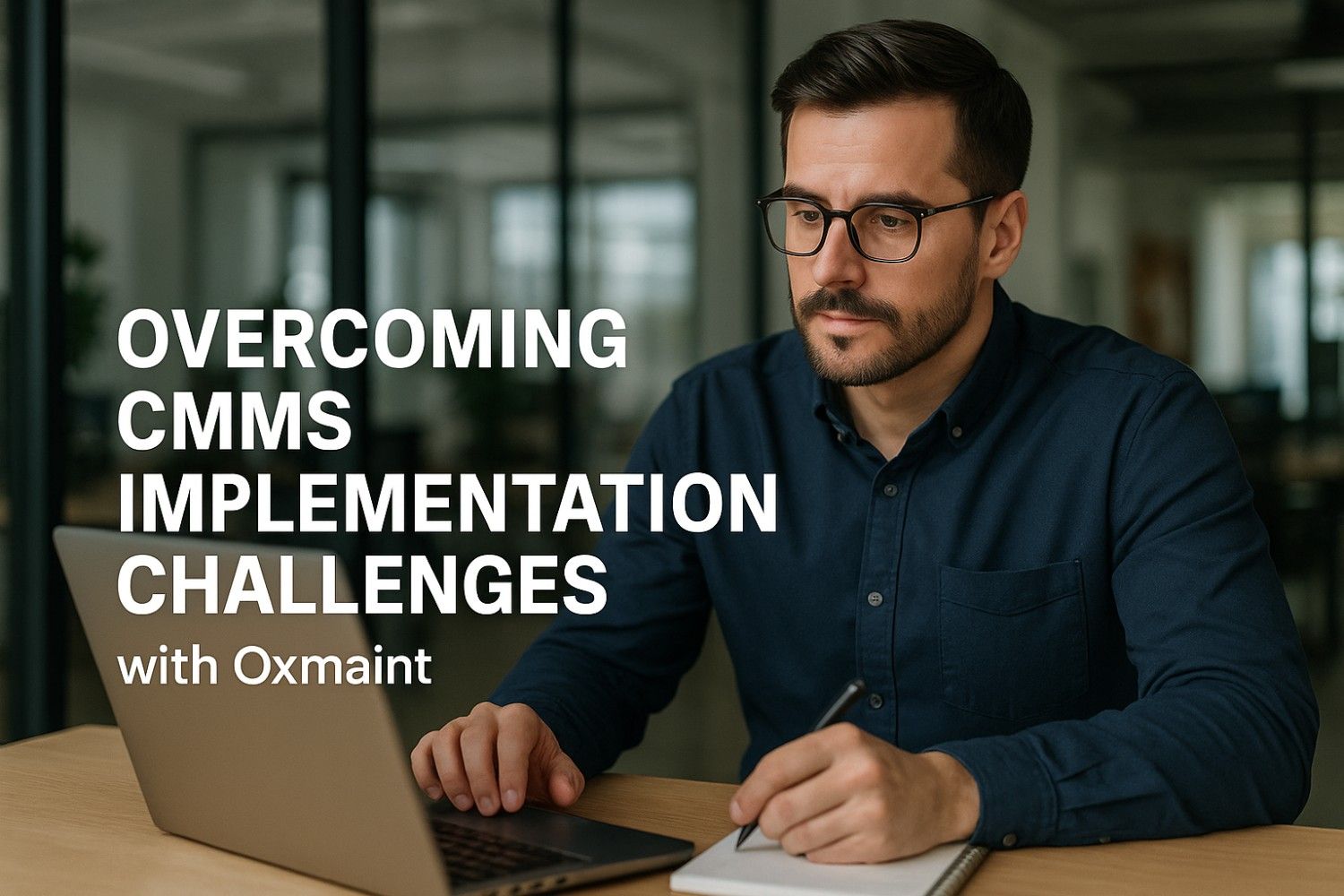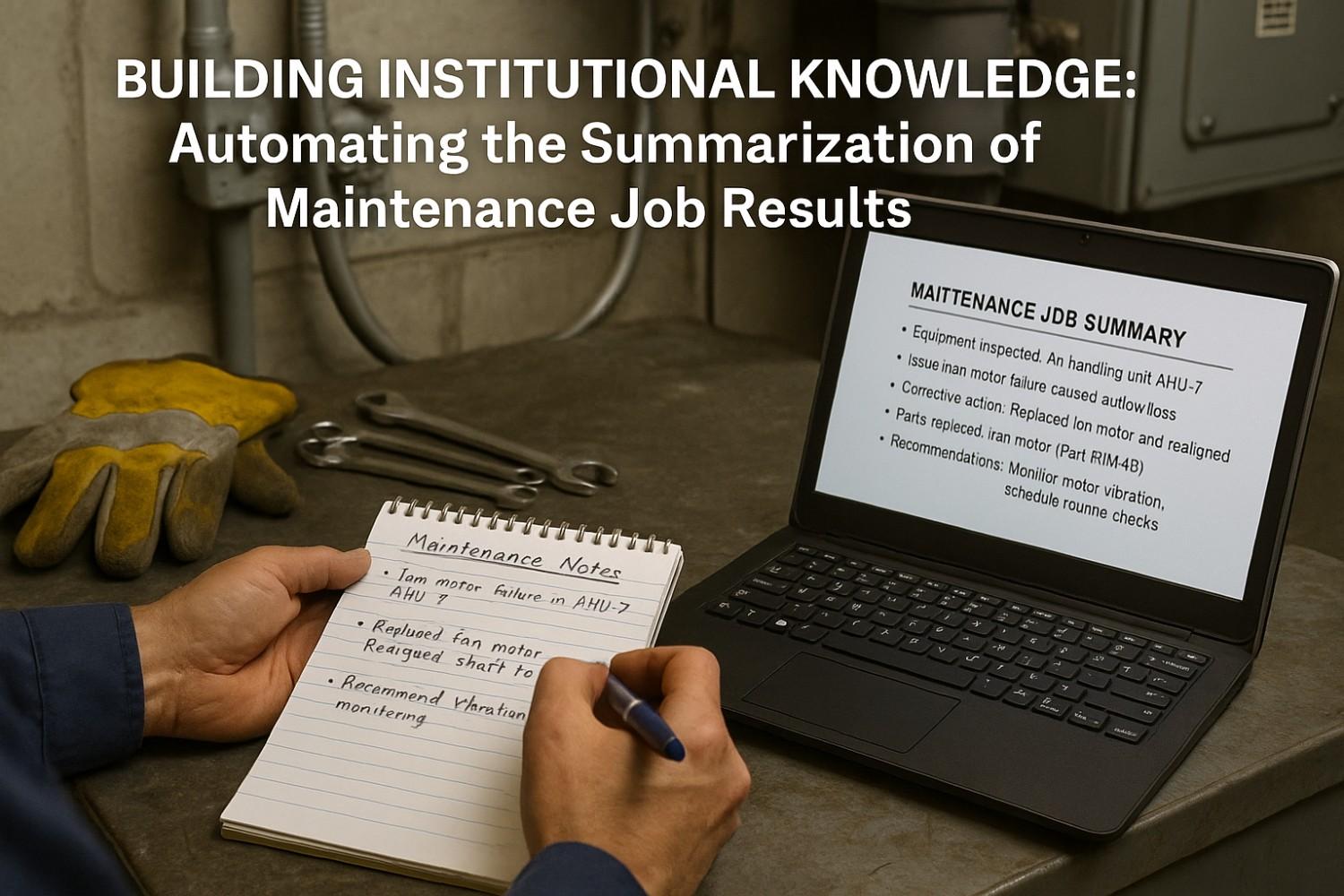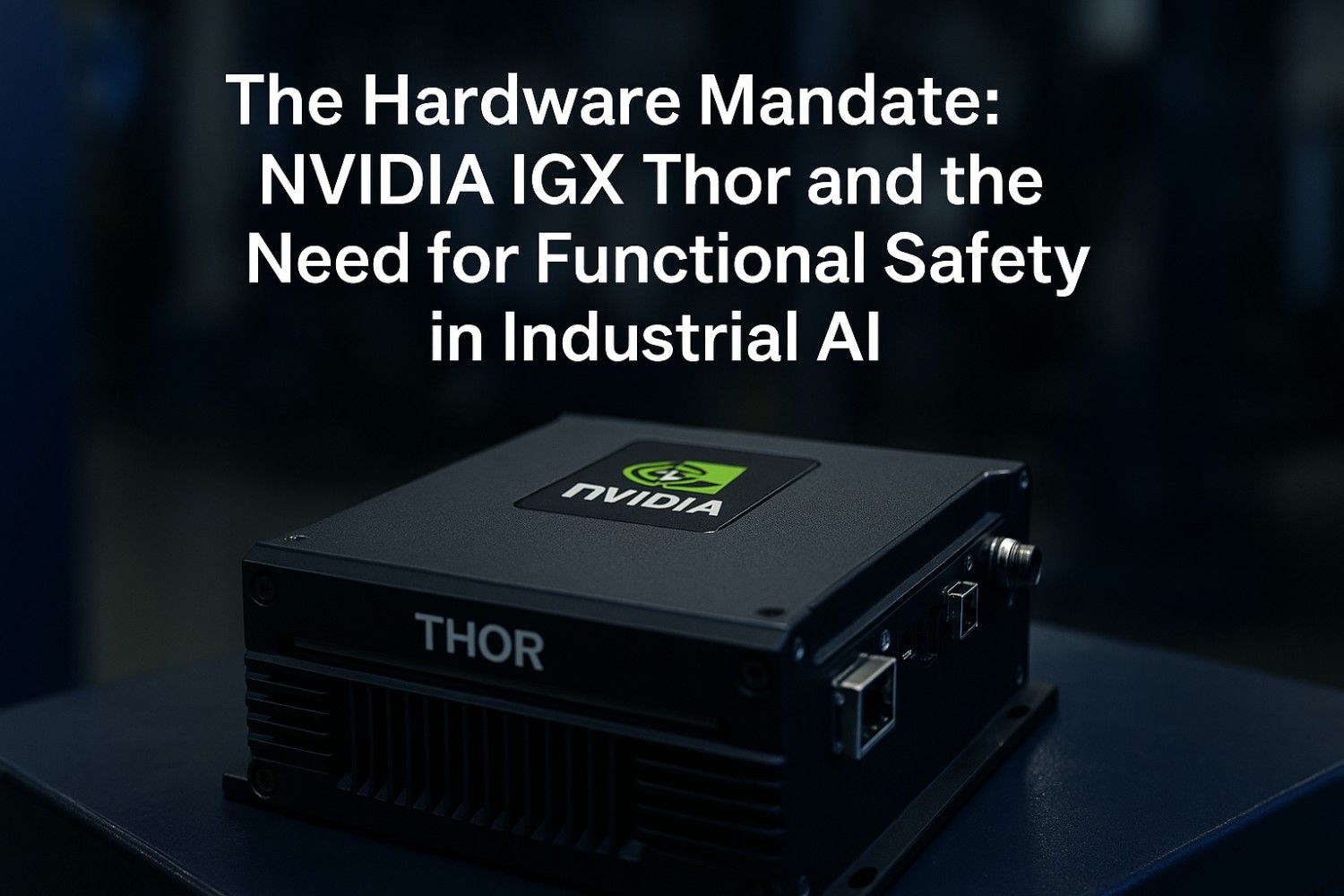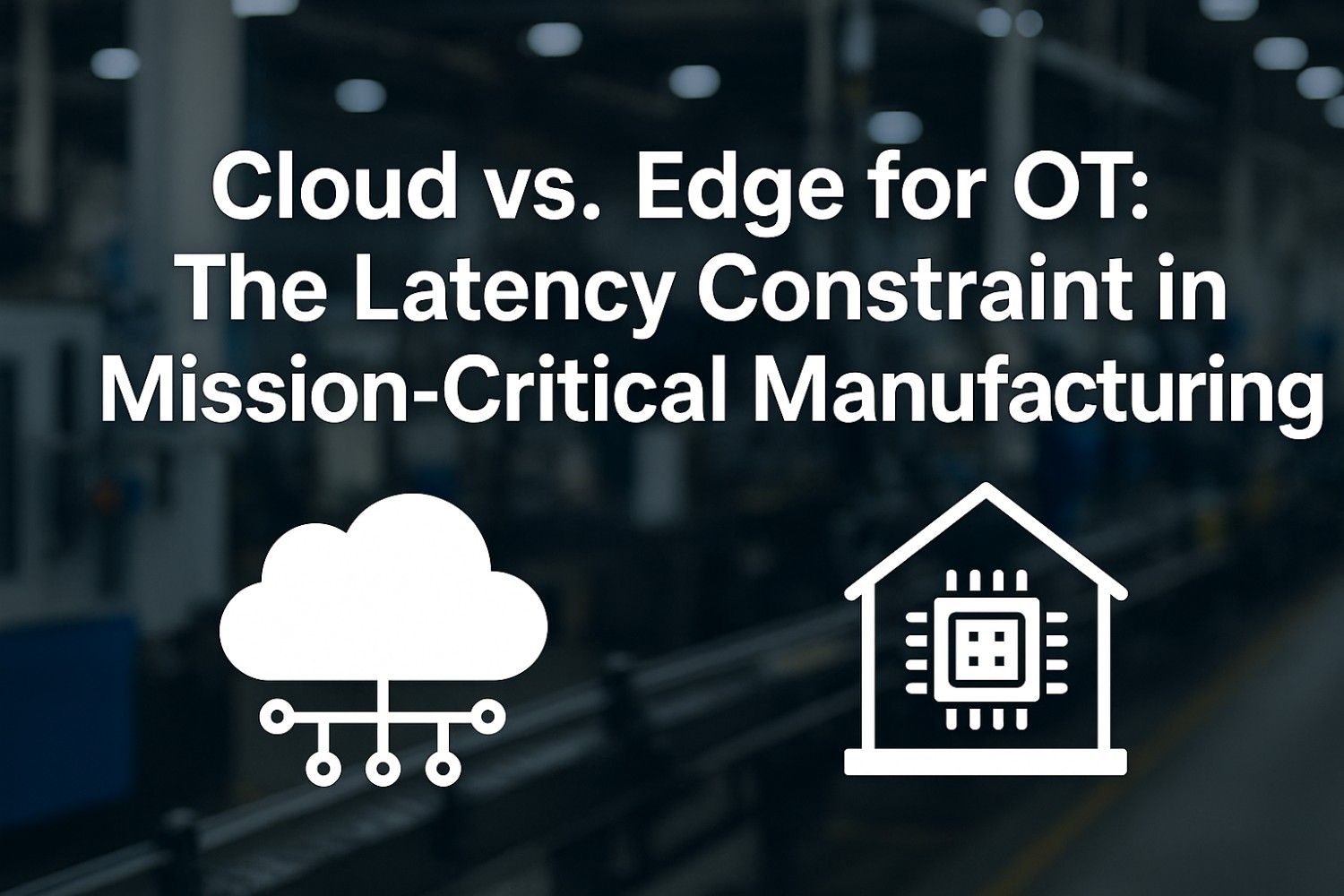Your CISO reviews the latest cloud AI vendor contract at 11:47 PM after a board meeting about cybersecurity incidents: "Section 8.3—Vendor reserves the right to process Customer Data through sub-processors located in jurisdictions including but not limited to..." She stops reading and opens the risk assessment—your maintenance logs containing proprietary equipment specifications, production schedules, failure patterns, and operational intelligence would transfer to third-party cloud servers across international borders. Without data sovereignty controls ensuring maintenance data remains within facility firewalls, you're essentially publishing your operational playbook to external entities while creating compliance violations under EU AI Act requirements, ITAR regulations, and industry-specific data protection mandates.
This security crisis confronts American manufacturing facilities as operations rush to implement AI-powered predictive maintenance without evaluating data sovereignty implications. The average industrial facility uploads 2-3 terabytes of sensitive operational data monthly to cloud AI platforms operated by vendors with 15-25 sub-processors across multiple jurisdictions, creating attack surfaces and compliance exposures invisible to traditional security,frameworks focused on enterprise IT rather than operational technology.
Facilities implementing on-premise AI deployments with complete data sovereignty achieve 100% elimination of third-party data processor risks while maintaining full regulatory compliance. The transformation lies in deploying local Large Language Models running entirely within facility networks—processing sensor data, maintenance logs, and equipment specifications without any external data transmission, meeting the strictest security requirements for regulated industries including defense, pharmaceuticals, aerospace, and critical infrastructure.
Your maintenance data never leaves your facility—see how on-premise LLMs keep proprietary data 100% secure!
Cloud AI platforms create unacceptable security risks by transferring sensitive maintenance logs, equipment specifications, and operational intelligence to third-party processors across multiple jurisdictions. Discover how local AI deployment powered by NVIDIA GPUs eliminates these risks entirely—processing all sensor data, maintenance narratives, and proprietary information within your facility firewall. Experience complete AI capabilities without any cloud dependency, external data transmission, or third-party processor involvement. EU AI Act compliant, ITAR approved, CISO verified.
Maintenance Logs as Critical Intellectual Property
Manufacturing maintenance data represents far more than simple repair records—it constitutes core intellectual property documenting proprietary equipment configurations, optimized operational parameters, competitive process innovations, and accumulated institutional knowledge worth millions in R&D investment. Maintenance logs reveal equipment performance characteristics, failure patterns, operational tolerances, and process optimization strategies that competitors would pay substantial sums to acquire, yet many facilities casually upload this intelligence to cloud AI platforms without recognizing the strategic value at risk.
Comprehensive maintenance documentation captures information across multiple IP categories requiring protection. Equipment specifications and custom configurations reveal capital investments and engineering innovations. Failure mode analysis documents reliability characteristics competitors could exploit. Operational parameters optimized through years of process refinement represent trade secrets. Maintenance procedures developed through institutional learning constitute proprietary methodologies. Production schedules embedded in maintenance timing expose manufacturing capacity and customer demand patterns.
Proprietary Equipment Specifications
Custom machine configurations, performance parameters, operational tolerances, and modification history revealing R&D investments and competitive capabilities. Cloud exposure enables industrial espionage through data aggregation.
Process Optimization Intelligence
Years of accumulated knowledge about optimal operating conditions, efficiency improvements, quality control parameters, and production methodologies representing millions in development costs.
Failure Pattern Analysis
Historical reliability data, root cause investigations, and degradation characteristics that competitors could use to identify equipment weaknesses and operational vulnerabilities.
Production Schedule Intelligence
Maintenance timing data revealing production volumes, capacity utilization, customer demand patterns, and strategic business information embedded in operational schedules.
The aggregated intelligence value of maintenance data far exceeds individual record significance. While a single work order might seem inconsequential, comprehensive maintenance histories analyzed through AI reveal complete operational profiles including equipment capabilities, production constraints, supply chain relationships, and strategic priorities. Cloud AI platforms processing data from hundreds of facilities could theoretically aggregate intelligence across competitors within the same industry, creating unacceptable strategic risks,even when individual vendor contracts promise confidentiality.
Eliminating Third-Party Data Processor Risk
Cloud AI architectures inherently introduce third-party data processor relationships that multiply security risks and compliance obligations beyond direct vendor interactions. Modern cloud platforms typically employ 15-25 sub-processors—infrastructure providers, analytics services, data storage vendors, support contractors—each representing potential attack vectors, compliance violations, and intellectual property exposure points. These complex supply chains create security dependencies extending far beyond primary vendor relationships, with many sub-processors operating across international borders under varying regulatory frameworks.
Sub-processor risk manifests through multiple threat vectors that traditional security frameworks struggle to address. Infrastructure providers hosting cloud AI platforms maintain physical and logical access to customer data regardless of encryption or access controls. Analytics services processing data for AI training or performance optimization create copies residing outside primary security boundaries. Support contractors troubleshooting system issues require access to operational data. Backup and disaster recovery services replicate data to additional jurisdictions. Each sub-processor relationship introduces new attack surfaces, insider threat potential, and compliance obligations.
| Risk Category | Cloud AI Platform | On-Premise AI | Risk Elimination |
|---|---|---|---|
| Third-Party Data Access | 15-25 sub-processors with data access | Zero external access | 100% elimination |
| Cross-Border Data Transfer | Multiple international jurisdictions | All data remains on-site | 100% elimination |
| Vendor Lock-In Risk | Proprietary formats, migration barriers | Complete data control | 100% elimination |
| Compliance Dependencies | Rely on vendor certifications | Direct compliance control | 100% elimination |
| Data Breach Exposure | Shared infrastructure attack surface | Isolated facility network | 95%+ reduction |
| Insider Threat Vectors | Vendor employees, contractors | Internal staff only | 100% elimination |
Regulatory frameworks increasingly recognize sub-processor risks through data sovereignty requirements and processor notification obligations. EU GDPR mandates explicit consent for sub-processor engagement and requires Data Processing Agreements with each entity. EU AI Act introduces additional obligations for high-risk AI systems processing sensitive data. Industry-specific regulations like ITAR, CMMC, and pharmaceutical GMPs impose even stricter data localization requirements prohibiting international data transfer regardless of contractual protections.
The hidden costs of sub-processor management compound direct security risks. Organizations must conduct due diligence on each sub-processor, maintain current awareness of processor changes, assess compliance status across jurisdictions, and manage contractual obligations with entities they never directly engage. Many vendor contracts reserve rights to change sub-processors without customer notification, creating ongoing compliance uncertainties. On-premise AI deployment eliminates these administrative burdens entirely by removing external processor dependencies.
EU AI Act Compliance for Industrial AI
The European Union AI Act establishes comprehensive regulatory framework for artificial intelligence systems, with particularly stringent requirements for industrial applications processing sensitive operational data. High-risk AI systems—including those used for critical infrastructure maintenance and industrial process optimization—face mandatory compliance obligations around data governance, transparency, human oversight, and technical documentation. Facilities operating in EU jurisdictions or serving EU customers must ensure AI implementations meet these requirements, while many global manufacturers adopt EU AI Act standards as baseline compliance frameworks even for non-EU operations.
Data sovereignty represents a core EU AI Act principle, requiring that high-risk AI systems processing sensitive data maintain appropriate geographic and logical access controls. The regulation emphasizes data localization for critical infrastructure applications, mandating that AI processing occurs within appropriate jurisdictional boundaries with documented governance frameworks. Cloud AI platforms distributing processing across international data centers face significant compliance challenges, particularly when sub-processors operate in jurisdictions lacking adequate data protection frameworks recognized under EU adequacy decisions.
EU AI Act Compliance Requirements for Industrial AI
On-premise AI deployment dramatically simplifies EU AI Act compliance by eliminating cross-border data transfer complexities and providing complete visibility into processing locations and access controls. Local systems enable comprehensive audit trails documenting all AI activities within facility-controlled environments, meeting transparency requirements without depending on vendor-provided monitoring tools. Human oversight becomes more feasible when AI systems operate within existing facility governance frameworks rather than distributed cloud architectures requiring external coordination.
On-Premise AI Compliance Advantages
- Complete data sovereignty with all processing occurring within documented facility infrastructure under direct organizational control
- Simplified documentation requirements without complex sub-processor relationships or international data transfer mechanisms
- Enhanced transparency through direct access to AI system operations, training data, and decision-making processes
- Robust human oversight integration with existing operational governance frameworks and approval workflows
- Superior cybersecurity posture through network isolation, eliminating cloud-based attack surfaces and third-party access vectors
- Streamlined quality management leveraging existing facility quality systems rather than vendor-dependent frameworks
- Reduced compliance auditing costs through simplified technical architectures and direct control over all system components
- Future-proof compliance positioning as regulations evolve toward stricter data localization requirements
Industry-specific regulations compound EU AI Act requirements with additional data protection mandates. Pharmaceutical manufacturers must comply with FDA 21 CFR Part 11 and EU GMP requirements governing electronic records. Defense contractors face ITAR restrictions on technical data export. Critical infrastructure operators encounter sector-specific cybersecurity frameworks like NERC CIP for utilities or TSA pipeline security directives. On-premise AI deployment provides unified compliance architecture satisfying multiple regulatory frameworks through comprehensive data localization.
Full Audit Trail and Control
Comprehensive audit capabilities represent critical requirements for both security monitoring and regulatory compliance, yet cloud AI platforms provide limited visibility into actual system operations, data access patterns, and processing activities occurring within vendor infrastructure. Organizations typically receive aggregated logs and summary metrics rather than complete audit trails documenting all data interactions, model training activities, and access events. This limited visibility creates blind spots during security investigations, compliance audits, and incident response scenarios where complete forensic reconstruction becomes impossible.
On-premise AI deployment enables complete audit trail capture at infrastructure, application, and data layers through organization-controlled logging systems integrated with existing security information and event management (SIEM) platforms. Every data access, model inference, system configuration change, and user interaction generates audit records stored within facility security monitoring infrastructure, creating comprehensive forensic capabilities meeting the strictest regulatory requirements. Audit data remains under organizational control indefinitely rather than subject to vendor retention policies or access restrictions.
Comprehensive Audit Capabilities
- Complete data lineage tracking from sensor ingestion through AI processing to maintenance recommendations and work order generation
- Detailed access logs documenting every user interaction, system query, and configuration change with timestamp and user attribution
- Model training and inference audit trails capturing input data characteristics, processing parameters, and output decisions
- Network traffic monitoring showing zero external data transmission, validating complete on-premise processing
- Integration with existing SIEM platforms enabling correlation with enterprise security monitoring and threat detection systems
- Retention control allowing indefinite audit data preservation meeting long-term compliance and forensic requirements
- Real-time alerting for anomalous activities, unauthorized access attempts, or configuration changes requiring security review
- Compliance reporting automation generating required documentation for regulatory audits and certification renewals
Audit trail completeness becomes particularly critical during security incidents requiring forensic investigation and regulatory reporting. When cloud AI platforms experience breaches, customer organizations lack visibility into actual data exposure, affected systems, and attacker activities—depending entirely on vendor incident reports that may minimize breach scope or delay disclosure. On-premise systems provide complete forensic data enabling independent investigation, accurate impact assessment, and confident regulatory reporting without vendor intermediation.
Control mechanisms extending beyond audit visibility include configuration management, access restrictions, and operational oversight that cloud platforms limit through shared infrastructure models. On-premise deployment enables complete control over AI system configurations, model training parameters, data retention policies, and operational schedules. Organizations can implement custom security controls, integrate with existing identity management systems, and enforce facility-specific governance policies impossible within cloud platforms designed for multi-tenant operations.
The governance advantages of on-premise control compound over time as AI systems become increasingly integrated with critical operational systems. Organizations maintaining complete control over AI infrastructure can adapt security policies as threats evolve, implement emerging compliance requirements without vendor dependencies, and preserve institutional knowledge about system operations through internally-maintained documentation rather than relying on vendor support resources that may change or become unavailable.
Building a Secure AI Perimeter
Effective on-premise AI security requires comprehensive architectural approaches integrating network isolation, access controls, data encryption, and monitoring systems that create defense-in-depth protecting sensitive maintenance data and AI operations. The security perimeter extends beyond simple firewall rules to encompass physical security, logical access restrictions, operational procedures, and governance frameworks ensuring that proprietary data remains protected throughout AI processing lifecycles while maintaining operational effectiveness.
Network architecture forms the foundation of secure AI deployment through complete isolation of AI infrastructure from external networks and careful segmentation within facility environments. AI systems operate within dedicated network zones—often termed "AI enclaves"—separated from both external internet connections and general facility networks through multiple firewall layers. This isolation prevents both inbound attacks from external threat actors and data exfiltration through compromised internal systems, creating "air-gapped" processing environments for the most sensitive applications.
Security Architecture Components
- Network segmentation isolating AI infrastructure within dedicated zones protected by multiple firewall layers and intrusion prevention systems
- Zero-trust access controls requiring explicit authentication and authorization for every data access and system interaction
- End-to-end encryption protecting data at rest and in transit using facility-managed encryption keys never exposed to external entities
- Physical security measures restricting access to AI infrastructure hardware through facility access controls and monitoring systems
- Operational procedures governing AI system maintenance, updates, and configuration changes through formal change management processes
- Monitoring and alerting systems detecting anomalous activities, unauthorized access attempts, and potential security incidents
- Incident response capabilities enabling rapid investigation and containment of security events affecting AI systems
- Regular security assessments including vulnerability scanning, penetration testing, and compliance audits validating security posture
Access control mechanisms ensure that only authorized personnel interact with AI systems through role-based permissions aligned with job responsibilities and security clearances. Integration with existing facility identity management systems—Active Directory, LDAP, or specialized industrial identity platforms—enables centralized authentication and authorization leveraging established user directories and access policies. Multi-factor authentication requirements add additional security layers for privileged operations including system configuration, model training, or administrative functions.
Data protection throughout AI processing lifecycles requires encryption at rest and in transit using organization-managed encryption keys. Unlike cloud platforms where vendors control encryption infrastructure and potentially maintain key escrow capabilities, on-premise systems enable complete key management within facility hardware security modules (HSMs) or key management systems under organizational control. This key sovereignty ensures that even physical theft of storage media would not compromise data confidentiality without access to separately-secured encryption keys.
Operational security procedures governing AI system management represent equally critical components beyond technical controls. Formal change management processes ensure configuration modifications undergo security review and approval before implementation. Vendor management procedures for AI platform providers—even in on-premise deployments—verify software integrity, assess update security, and maintain awareness of vendor security incidents. Regular security assessments including vulnerability scanning and penetration testing validate security posture while identifying potential weaknesses requiring remediation.
Conclusion
Manufacturing maintenance data represents critical intellectual property containing proprietary equipment specifications, process optimizations, failure analysis, and operational intelligence worth millions in accumulated R&D investment. Cloud AI platforms create unacceptable risks by transferring this sensitive information to third-party processors across international borders, exposing organizations to industrial espionage, compliance violations, and strategic intelligence leakage. On-premise AI deployment eliminates these risks entirely through complete data sovereignty ensuring maintenance data never leaves facility firewalls.
Third-party data processor risks inherent in cloud AI architectures multiply security exposures and compliance obligations beyond direct vendor relationships. Typical cloud platforms employ 15-25 sub-processors operating across multiple jurisdictions, each representing potential attack vectors, insider threats, and regulatory violations. Organizations face complex due diligence requirements, ongoing compliance monitoring, and limited visibility into actual data handling practices. On-premise deployment eliminates all external processor dependencies, providing 100% risk reduction through facility-controlled infrastructure.
EU AI Act compliance for high-risk industrial AI applications requires comprehensive data governance, transparent processing architectures, robust cybersecurity measures, and human oversight mechanisms challenging to achieve with cloud platforms distributing operations across international sub-processors. On-premise deployment simplifies compliance through complete data localization, direct system control, and simplified documentation eliminating cross-border transfer complexities. Additional industry-specific regulations—ITAR, CMMC, pharmaceutical GMPs—impose even stricter requirements satisfied through unified on-premise architecture.
Comprehensive audit capabilities enable security monitoring, compliance reporting, and incident investigation through organization-controlled logging systems providing complete visibility into AI operations. Unlike cloud platforms offering limited vendor-controlled audit data, on-premise systems integrate with existing SIEM infrastructure for indefinite retention under organizational control. Complete audit trails document data lineage, access patterns, model operations, and configuration changes supporting forensic investigation and regulatory reporting without vendor dependencies.
Building secure AI perimeters requires defense-in-depth architecture integrating network isolation, zero-trust access controls, end-to-end encryption, physical security, operational procedures, and continuous monitoring. Network segmentation creates dedicated AI enclaves protected through multiple firewall layers. Encryption using organization-managed keys ensures data confidentiality throughout processing lifecycles. Regular security assessments validate security posture while identifying potential weaknesses requiring remediation.
The security advantages of on-premise AI deployment extend beyond immediate risk reduction to strategic positioning as regulatory frameworks evolve toward stricter data sovereignty requirements. Organizations implementing comprehensive data localization today future-proof operations against emerging mandates while establishing security architectures supporting competitive advantage through protected intellectual property and operational intelligence that never reaches competitors through cloud platform aggregation.
Protect your maintenance data with 100% on-premise, zero-cloud AI.
Process all sensor data and maintenance logs securely inside your facility—no external access, no cloud dependency. Experience real-time AI analysis, automated work orders, and complete data isolation.
What You'll See: Fully isolated AI deployment • Real-time insights • SIEM-ready audit trails • EU AI Act–aligned, ITAR/CMMC-compliant architecture • Smooth integration with existing security systems.
Ideal for CISOs, security teams, and industrial leaders protecting sensitive operations.
.jpeg)






.jpeg)

